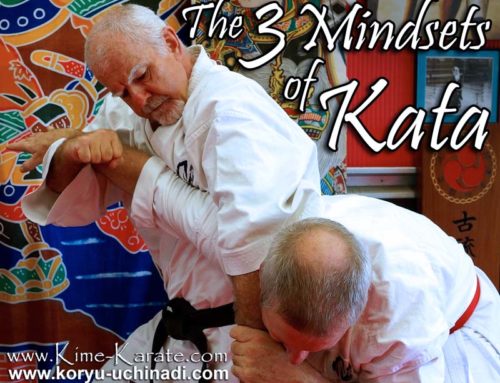RIT & Kime Karate team up for powerful images!
It was an honor to be part of this photo shoot at the Rochester Institute of Technology to capture a never before seen look at the force generated by striking a surface made to human soft tissue. To capture the force waves, professor @TedKinsman thought up and designed a new type of imaging using polarizing filters and a high speed digital camera system. The back surface of the gelatin was placed up against a brick wall, solid and immovable so the military grade gelatin would stay in camera and the energy would be fully transferred into it. The still images were taken a millisecond after impact and the resulting images are pretty amazing.
To see how it was done, check out: https://petapixel.com/2017/01/11/photograph-power-punch-using-polarized-light/
As a martial artist, I was very curious to see the way the force of the strike was transferred to the object. Through the imaging, you are actually able to see the energy transfer into the gelatin and how the energy moves through the material as a wave.

A scientific image of Sensei Keyes’s punch by RIT’s professor Ted Kinsman.
Viewing the still images, which were all taken at the same time from the moment of impact shows fairly consistent results for the “professional” karate punch done by Sensei Aric Keyes. With a definite wave of force emanating from the striking surface of the fist. The waves are close together and limited to the area of gelatin surrounding the striking surface. With the far side of the gelatin still unaffected by the impact at the time of capture and remaining clear. You may also note the edge of the gelatin remains straight and unaffected by the strike at this time as well.
These are a visual representation of the velocity of impact. Because of the velocity of the strike, the energy wave has not yet had time to travel through the material. This is visually shown by the tighter waves and clear far side in the gelatin. The tighter waves show greater compression of the material, which would result in greater damage to the soft tissue.
That wave then travels away from the strike and becomes a force of it’s own as it moves through the object, losing energy as it as it goes until eventually stopped by the density within the material struck.
Interpreting this to human tissue, the greater velocity creates both greater pain and damage while striking.

Professor Ted Kinsman striking gelatin for science at RIT in Rochester, NY.
If you look at the image of the punch by the untrained individual, it looks quit a lot different. When first viewed, the image appears to be much more impressive, which as an image it is. There is much more to see visually having the waves spread out further showing a nice color spectrum through the surface. You can see a greater dispersion of energy by waves that reach all the way through the gelatin. Those waves are also thinker, showing less compression from the impact. The edge of the gelatin material is already curving as the gelatin block is moved more in unison from the impact.
Then you realize that that is it for the punch. It is near the end of the power being transferred into the material, while the trained punch is just beginning as the wave has yet to leave the fist to travel through the gelatin.
Think of this much like the difference of getting hit versus getting pushed.
Through viewing the high speed video, you are able to see the energy transfer over time, which you can’t see in the still images which were photographed separately. While watching the video, you can watch the first impact of the strike and the immediate transfer of energy as the first wave of energy zips through the gelatin. As the fist penetrates the material, there is a moment when the fist suddenly slows down, but does not stop. This is a brief moment just before the jacket sleeve shoots into the video. This the moment of maximum compression within the material.
However, the fist continues to drive through the material which then causes damage to the material as the natural limits of the gelatin have been exceeded.
After the strikes energy is transferred into the gelatin, stops it’s forward progress and withdraws, the material continues to be effected as the wave moves within the material, bouncing off the outer edges as well as oppositional waves of energy within the material.
Combining some of my favorite things, martial arts, science and photography; this was an amazing way to view the impact of striking.








Leave A Comment
You must be logged in to post a comment.